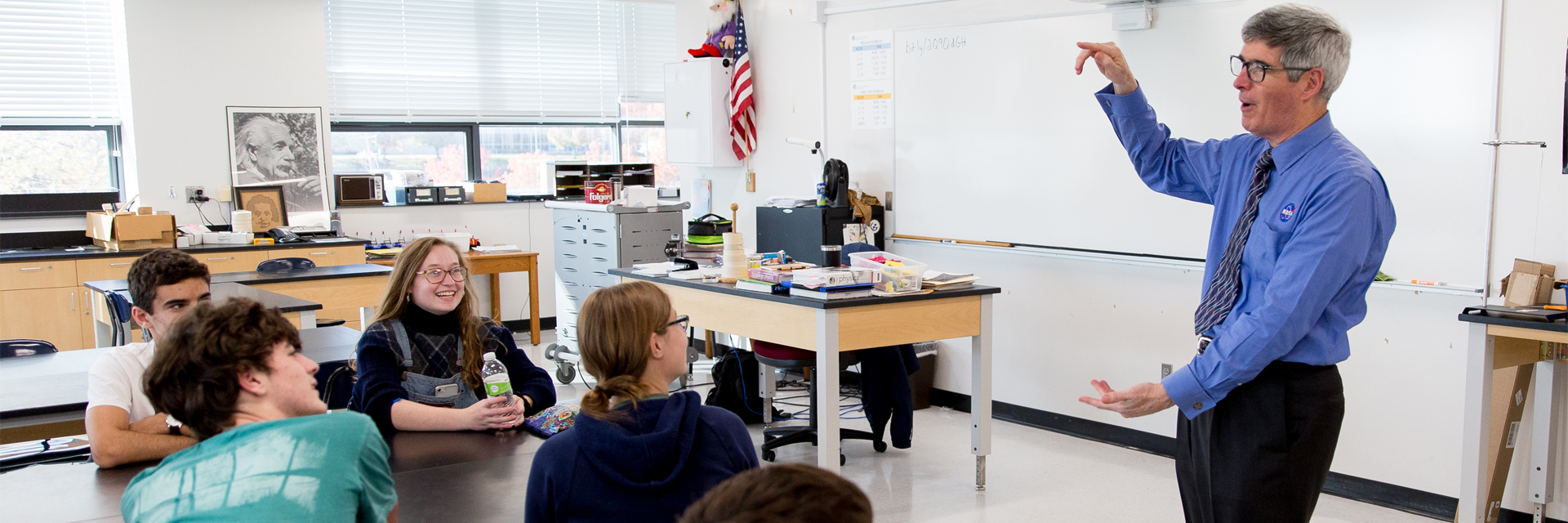Some real students of physics stayed after school on Thursday at Central Academy – for a history lesson?
Dr. Bill Barry has been NASA’s chief historian since 2010. In town to deliver a lecture Thursday night at Drake University, Dr. Barry sought the opportunity to speak more informally with some high school students while he was here, kind of like a warmup for his main event, and he found a small but earnest audience at CA.
At 60, Barry is the same age as the agency he’s worked for since 2001, after 22 years in the U.S. Air Force where he served on the faculty of the Air Force Academy. He holds a master’s degree from Stanford and a doctorate from the University of Oxford in England. His dissertation was on Soviet missile designs and manned space policy during the 1950s and ’60s. Barry also holds a commercial license for both powered aircraft and gliders.
He’s on something of a publicity tour this year as NASA celebrates milestone golden anniversaries of the manned space program that built national interest and suspense throughout the 1960s during the “space race” with the Soviet Union. The climax was the first lunar landing in 1969, chronicled in one of 2018’s major Hollywood films, First Man.
“I’ve seen it twice,” Barry told students. “In fact, I was a consultant on the movie. If you stay until the end of the credits and look real close, you’ll see my name in there somewhere.”
A self-described “space geek” as a boy when the race to the moon launched, Barry dreamed of being an astronaut.
“Turned out I was better at writing papers and essays than I was at engineering,” he said. “But I finally found my way to NASA, thanks largely to my Russian language skills, and the only reason I took Russian in the first place was because I didn’t like my French teacher in high school.”
So, he advised, don’t follow his path if you aspire to work someday for NASA, as many in the group indicated they’d like to someday. He got lucky. They should stick to physics.
Students too young to recall the historic voyages of the Mercury/Gemini/Apollo astronauts nevertheless had plenty of questions for Barry. They were curious about how the agency adjusted to budget cuts after the race with Russia was won, what he thought about private sector forays into outer space exploration and where he thinks NASA is headed next. But he’s a historian.
“You know, it’s interesting why we set our sights on the moon back then,” he said. “I’ll be talking about this later at Drake. The main reason was decolonization. As the Cold War started to heat up, many third world countries were declaring their independence. The Russians beat us into space when they launched Sputnik in 1957. After President Kennedy took office in 1961, he became concerned that if we didn’t demonstrate superiority to the Russians, we wouldn’t attract enough friends around the world. So he established the national goal of sending a man to the moon by the end of that decade.”
Soon, the NASA logo emblazoned on Barry’s shirt, the one he’s obviously proud to wear even though he nonchalantly referred to it as “the meatball,” became as familiar as the New York Yankees’.
And world history was made – through physics! Who’s to say students staying after school in 2018 won’t become Martians, or movie consultants, one day?





